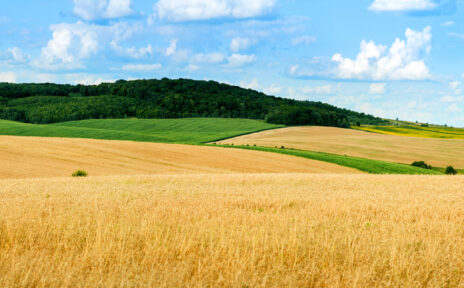Our Commitment: Engaging our key agricultural suppliers to promote sustainable and regenerative agriculture practices that maintain healthy soils, conserve natural resources and protect biodiversity. The ultimate objective is to produce food efficiently and in an economically viable manner while maintaining and, where feasible, restoring the land.
From experience, we have learned that agriculture practices must be tailored to crop and specific locational variables (i.e., soil type, climate, pest control requirements, farmer capacity) and a one-size-fits-all or prescriptive set of requirements is not effective. In general, we encourage agricultural suppliers to adopt the following types of practices as relevant and viable for their crops and geographies:
- No or reduced tilling of soil
- Cover crops and crop rotations
- Nitrogen management and optimizing fertilizer usage
- Integrated Pest Management practices
- In this Section
- Animal Welfare
- Sustainable Sourcing
- Traceability
- Sustainable Agriculture
- Pesticide Management
Our Progress: We are working methodically towards sustainable and regenerative agriculture practices across our supply chain using a top-down, bottom-up five-pronged approach:

1. HowGood Platform – We are using the HowGood platform, which allows our organization to leverage traceability data to better understand environmental and social impacts and opportunities related to our global sourcing and individual products. HowGood is a leading sustainability intelligence platform for food companies with a database of over 90,000 emissions factors and the ability to comprehensively evaluate and prioritize individual crops we source globally across key environmental and social metrics, including:
- GHG emissions (scope 3 and FLAG)
- Blue water usage
- Land occupation and land use change (# of crops/hectare/crop cycle; % of natural habitats)
- Soil health
- Biodiversity
- Pesticide and fertilizer usage
- Labor risk
- Animal welfare
In addition, we are in the process of activating and piloting the FieldScope module, which will provide the ability to evaluate field-level data and farming practices. The module facilitates collection and analysis of on-farm data related to:
- Crop details and soil characteristics
- Inputs (fertilizers, crop protection)
- Field operations (machinery, fuel, energy)
- Irrigation
- Carbon emissions and intensity
- Farm settings (country and climate)
The platform also builds our product footprinting capacity with the ability to evaluate product-level impacts and opportunities more efficiently and at scale across the broad range of our portfolio. This includes collaborating with several of our key customers that are also using the platform to evaluate select products.
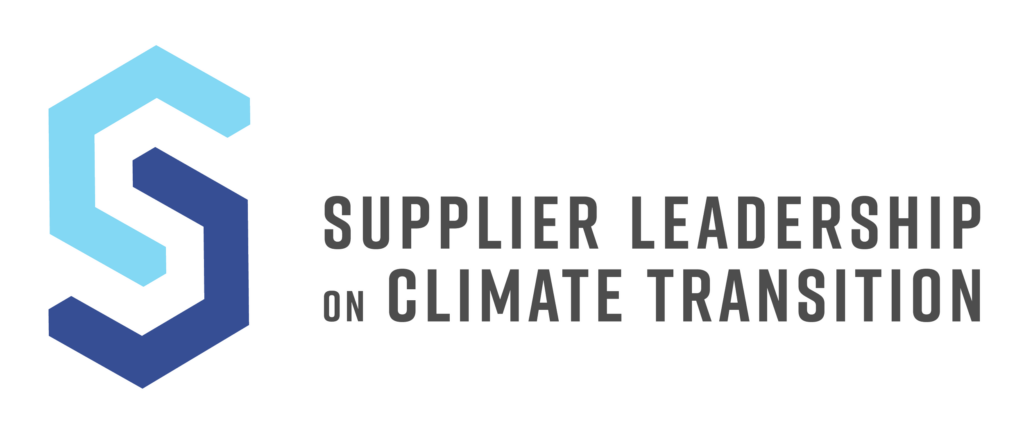
2. Ingredient Supplier Benchmarking – We conduct regular supplier benchmarking focused on supplier organizations representing ~90% of our global spend on ingredients and packaging. Our baseline benchmarking includes evaluating whether individual organizations have a commitment to sustainability, GHG-related public goals, and disclosure of data (environmental, GHG, and pesticide use). We also benchmark participation of suppliers in CDP Supply Chain and the Supplier Leadership on Climate Transition (Supplier LOCT) program, which is a climate university for suppliers offering free training, tools and technical assistance to accelerate their GHG reduction efforts and team capacity. The following are benchmarking results for fiscal year 2024:
Ingredient suppliers representing ~90% spend on global ingredients with:
- Public commitment to sustainable practices: 73%
- GHG-related public goals: 54%
- Published sustainability data: 59%
Ingredient suppliers in the top 50 spend on global ingredients and packaging with:
- Public commitment to sustainable practices: 90%
- GHG-related public goals: 70%
- Published sustainability data: 82%
- CDP Supply Chain participation: 58%
- Supplier LOCT participation: 60%
We also complete an annual screening of global ingredient and packaging supplier locations to evaluate proximity to water stressed regions, areas of high biodiversity, deforestation and also our scope 3 greenhouse gas (GHG) emissions. Additional detail on these assessments is available on the following pages: Water Stewardship, Biodiversity and Deforestation, and GHG Emissions. We also regularly benchmark our food industry peer group.
3. Supplier Standards and Requirements – Approximately 90% of supplier locations providing ingredients to our organization are located domestically in North America and Western Europe operating under strict legal and monitoring frameworks. This includes 24 of our top 25 global ingredient and packaging suppliers founded and/or headquartered in the U.S. This sourcing footprint has also resulted in maintaining long-standing relationships with our contract farm networks facilitating more effective direct supplier engagement and monitoring of agricultural practices. Our suppliers have heightened responsibilities when dealing with products that are intended for human consumption and are required to comply with all food quality and safety laws, including all applicable provisions of the Food Safety Modernization Act, and shall ensure that its products present no threat to human safety. Adherence to our Supplier Code of Conduct is mandatory for each supplier and its supply chain, including requirements relevant to product safety and quality, labor practices, and environment and sustainability. In addition, we utilize procurement specifications and reserves the right to request annual screening panels and test crops from the growers as verification support for targeted crop requirements and certifications. We also maintain a No Deforestation Policy, and our aspiration is to source 100% of our global commodities with no deforestation or conversion impacts.
4. Commodity and Product-Specific Initiatives – We continue to pursue implementing commodity-specific initiatives and piloting product innovations related to regenerative and sustainable agriculture including providing financial support, education and training, and technological advancements to our supplier partners. The following are examples initiatives:
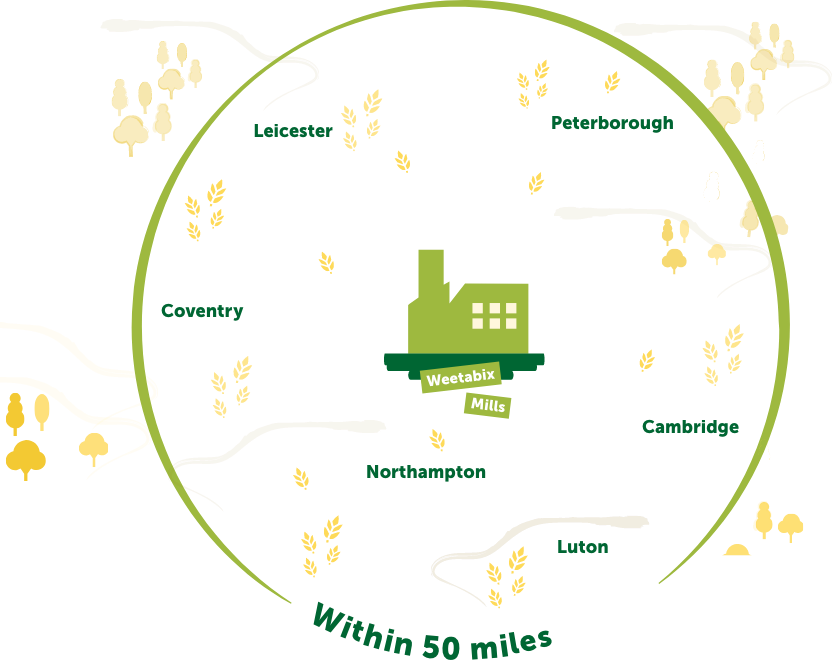
- Weetabix Wheat Growers Group – Since fiscal year 2010, Weetabix has engaged with a Growers Group of over 150 local farmers (meet our farmers here) to source over 75,000 metric tons of wheat across more than 4 million acres. The purpose of the Growers Group is to advance the sustainability of wheat going into products by producing less carbon-intensive grains at economic scale by:
- Sourcing all wheat for Weetabix products from within a 50-mile radius of the Burton Latimer manufacturing facility.
- Maintaining a robust wheat growing protocol, a strict protocol covering quality, consistency, traceability and environmental sustainability of the harvest.
- Requiring all growers to be Red Tractor certified and to also be part of a government sponsored environmental management scheme such as Sustainable Farming Incentive (SFI), countryside stewardship, or Linking Environment and Farming (LEAF).
- Establishing a baseline for wheat GHG emissions that is representative of the diversity of farming, soil types and climate conditions among growers. Learn about the wheat cycle here.
- Collating baseline data to understand the sources and factors that most influence GHG emissions and sharing data with farmers. We also provide additional support such as weather stations, soil and tissue analysis and technical expertise, including an annual Wheat Growers Group Summit.
- Leveraging the farmer’s expertise to design farmer-led trials to evaluate these sources and factors, including a diverse group of farmers growing in different soil types.
- Building a sourcing mechanism, including contract commitments and premium payments, to incentivize and secure wheat produced using less carbon-intensive practices.
- Setting sourcing targets to help meet Weetabix net zero carbon goals.

Weetabix was honored to receive the Net Zero Initiative 2024 Award from the Food & Drink Federation (FDF). The annual FDF Awards recognize innovation, industry talent and healthier product development across the U.K. food and drink sector. Weetabix was recognized for advancements toward producing low or net zero carbon wheat on an economic scale.
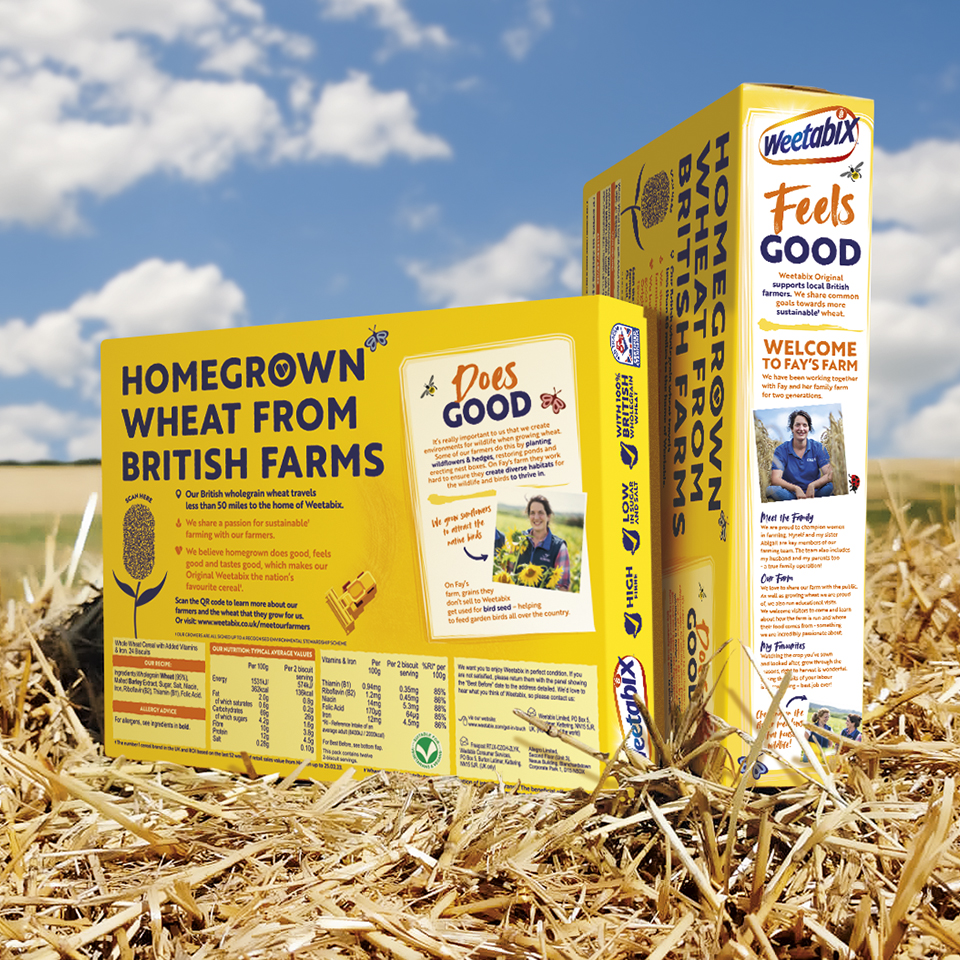
During fiscal year 2024, Weetabix worked with a pioneer group of six growers to explore how nitrogen inputs can be reduced within the annual growing cycle, helping to improve water and air quality and enhance biodiversity. The production, transport and use of nitrogen fertilizer is the biggest contributor to the carbon footprint of wheat production. Based on soil sampling, climate monitoring and crop testing, the initial trials of using less nitrogen fertilizers in small sections of wheat fields have been promising, resulting in a 50% reduction of GHG emissions compared with the standard emission factor for wheat. Weetabix is currently assessing the feasibility of expanding the trials and continues to work in partnership with Map of Ag to leverage their data platform, analytics and technical expertise.

- Potato Analytics Platform – We own and operate potato farms in Maine and procure the remainder of our potato supply from third-party network growers. We have partnered with Agriculture Data Optimization (Adopt) to design a data analytics solution specific to optimizing potato yields. Adopt is an agritech company, based in Minnesota, using predictive analytics to optimize farming conditions, enhancing yield, quality and sustainability in the agricultural supply chain. The platform will accelerate our ability to leverage advanced technology, including automated data syncs such as from farm equipment-mounted sensors that can monitor real time variables related to planting, watering, spraying applications and harvesting. This platform is an integral piece in our pursuit of a full lifecycle approach to more sustainable potato products and complements the following related initiatives:
| Pillar | Progress and Potential Opportunities |
|---|---|
| Sourcing | In addition to using the Adopt platform, we have also made progress with traceability data, which will be used in the HowGood platform, and have engaged our largest suppliers in the CDP Supply Chain and the Supplier LOCT programs. We are also exploring the use of Potato Sustainability Alliance benchmarking data and the Cool Farm Tool to complement or inform the Adopt platform. |
| Operations | During fiscal year 2024, we commissioned a feasibility study through a third-party partner to evaluate renewable energy for our potato farms in Pineland, Maine. Our Michael Foods production plants are part of the Department of Energy Better Plants Program, and our Bob Evans Farms potato and side dish processing site in Lima, Ohio, has made significant reductions in waste through a partnership with Green Field Solutions. Bob Evans Farms has also launched a Save the Potato Six Sigma project and Michael Foods continues to explore how to safely use every part of the egg and potato, including diverting to beneficial byproducts (i.e., supplements in animal feed, soil conditioner and other innovative applications). Michael Foods also repurposes manure from farms. |
| Packaging | We continue to evaluate our packaging portfolio to increase sustainability characteristics and comply with emerging extended producer responsibility laws. We are also a member of the Sustainable Packaging Coalition and committed to integrating How2Recycle labels into our packaging. |
| Products | Our new partnership with HowGood will help us evaluate sourcing and better understand the social and environmental footprints of our products. |
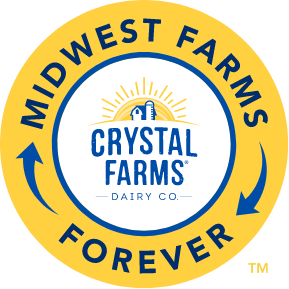
- Dairy Sourcing – Crystal Farms launched the Midwest Farms Forever initiative with a mission to source 100% of our dairy exclusively from family-owned dairy farms across the Midwest to help the farmers and the co-ops they are a part of thrive. Crystal Farms has utilized this initiative to shift from a nationwide sourcing model to a Midwest-focused approach. Crystal Farms is committed to these real farms, run by real people and families, and providing additional funds to educate and elevate the farmers of tomorrow.
- Product Innovations – We have demonstrated a willingness to explore and invest in product-specific innovations, such as Airly Brands and Bright Future Foods, PeaTos and Do Good Eggs. Each initiative has offered the ability to test and learn how to successfully approach more sustainable sourcing, supplier and farmer engagement and incentives, and the commercial aspects of product sustainability.
- Sourcing Certifications – We acknowledge the trend toward certified or labeled products, which is of growing interest to customers, consumers and investors. We seek to only use credible certification frameworks and auditable practices. We partner with several suppliers who have programs in place to sustainably source cocoa and are currently working to meet customer expectations for supplying Rainforest Alliance- or Fair Trade-certified cocoa ingredients by 2025. Our Weetabix business currently receives the 100% sustainable cocoa certification from Rainforest Alliance for all of the cocoa it uses across its product range, which is fully audited. Although we are a very small user of palm oil, we engage with palm oil suppliers and only directly purchase Roundtable on Responsible Palm Oil (RSPO) Mass Balanced-certified palm oil ingredients. Our Annual Communication of Progress report submissions are available here. All soy oil and a limited amount of soy protein isolate, used by our Post Consumer Brands cereal business, are directly sourced from soybeans grown and processed in North America. All soybean meal for feeding poultry is sourced from within the U.S. Weetabix is a member of the Round Table for Responsible Soy (RTRS) through the purchase of RTRS credits. We also have products that are certified to and are exploring other standards that have agricultural elements, such as USDA Organic, Grain-Free, Plant-Based, Certified Cage-Free, pollinator-related and others.
5. Industry Collective Action Programs – Post actively participates in several industry-specific and collective action initiatives that promote sustainable agricultural practices, such as:
- Supplier Leadership on Climate Transition (SLOCT)
- CDP Supply Chain
- Roundtable on Sustainable Palm Oil (RSPO)
- THESIS, by The Sustainability Consortium
- Map of Ag
- Meat Institute ProteinPACT
- Food and Drink Federation
- International Dairy Foods Association (IDFA)
- Minnesota Environmental Initiative
- Future Farmers of America (FFA)
- United Egg Producers
